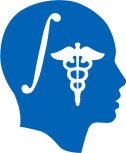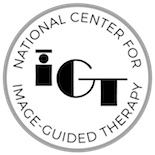Difference between revisions of "RSNA 2017"
| Line 9: | Line 9: | ||
|} | |} | ||
| − | [ | + | [Page under construction] |
| + | |||
| + | |||
| + | |||
| − | |||
'''The events attended by SPL/NA-MIC representatives are listed in the calendar below. Note that due to a current known limitation of our infrastructure, you will need to manually navigate to the week of November 26 to see the relevant events.''' | '''The events attended by SPL/NA-MIC representatives are listed in the calendar below. Note that due to a current known limitation of our infrastructure, you will need to manually navigate to the week of November 26 to see the relevant events.''' | ||
=Program events= | =Program events= | ||
| − | + | The following events will be presented at the [http://www.rsna.org/Annual_Meeting.aspx 103rd Annual Meeting of the Radiological Society of North America (RSNA 2017)] | |
==3D Slicer: an open-source software platform for segmentation, registration, quantitative imaging and 3D visualization of multi-modal imaging data== | ==3D Slicer: an open-source software platform for segmentation, registration, quantitative imaging and 3D visualization of multi-modal imaging data== | ||
3D Slicer is an open-source software platform for medical image analysis and 3D visualization used in clinical research worldwide. The application provides clinical researchers easy access to over 350 modules and extensions that can be run on their Windows, Mac or Linux laptop computer with their own data. 3D slicer provides functionalities for segmentation, registration, automated measurements, quantitative imaging, DICOM interoperability and structured reporting as well as other utilities such as tool tracking and real-time data fusion for image-guided therapy. The platform integrates quantitative image analysis in the imaging workflow and facilitates the translation of innovative algorithms into clinical research tools. 3D Slicer is supported by a multi-institution effort of several NIH-funded consortia, which include the Neuroimage Analysis Center (NAC), the National Center for Image Guided Therapy (NCIGT), and the Quantitative Image Informatics for Cancer Research (QIICR). Funding from several other countries contributes to some aspects of the platform. Over the past 13 years, more than 3,600 clinicians and scientists have attended 3D Slicer training workshops worldwide. Since its release at RSNA 2011, the latest version of the software 3D Slicer version 4 has been downloaded over a quarter million times. | 3D Slicer is an open-source software platform for medical image analysis and 3D visualization used in clinical research worldwide. The application provides clinical researchers easy access to over 350 modules and extensions that can be run on their Windows, Mac or Linux laptop computer with their own data. 3D slicer provides functionalities for segmentation, registration, automated measurements, quantitative imaging, DICOM interoperability and structured reporting as well as other utilities such as tool tracking and real-time data fusion for image-guided therapy. The platform integrates quantitative image analysis in the imaging workflow and facilitates the translation of innovative algorithms into clinical research tools. 3D Slicer is supported by a multi-institution effort of several NIH-funded consortia, which include the Neuroimage Analysis Center (NAC), the National Center for Image Guided Therapy (NCIGT), and the Quantitative Image Informatics for Cancer Research (QIICR). Funding from several other countries contributes to some aspects of the platform. Over the past 13 years, more than 3,600 clinicians and scientists have attended 3D Slicer training workshops worldwide. Since its release at RSNA 2011, the latest version of the software 3D Slicer version 4 has been downloaded over a quarter million times. | ||
Revision as of 15:53, 26 July 2017
Home < RSNA 2017

|

|

|
[Page under construction]
The events attended by SPL/NA-MIC representatives are listed in the calendar below. Note that due to a current known limitation of our infrastructure, you will need to manually navigate to the week of November 26 to see the relevant events.
Contents
- 1 Program events
Program events
The following events will be presented at the 103rd Annual Meeting of the Radiological Society of North America (RSNA 2017)
3D Slicer: an open-source software platform for segmentation, registration, quantitative imaging and 3D visualization of multi-modal imaging data
3D Slicer is an open-source software platform for medical image analysis and 3D visualization used in clinical research worldwide. The application provides clinical researchers easy access to over 350 modules and extensions that can be run on their Windows, Mac or Linux laptop computer with their own data. 3D slicer provides functionalities for segmentation, registration, automated measurements, quantitative imaging, DICOM interoperability and structured reporting as well as other utilities such as tool tracking and real-time data fusion for image-guided therapy. The platform integrates quantitative image analysis in the imaging workflow and facilitates the translation of innovative algorithms into clinical research tools. 3D Slicer is supported by a multi-institution effort of several NIH-funded consortia, which include the Neuroimage Analysis Center (NAC), the National Center for Image Guided Therapy (NCIGT), and the Quantitative Image Informatics for Cancer Research (QIICR). Funding from several other countries contributes to some aspects of the platform. Over the past 13 years, more than 3,600 clinicians and scientists have attended 3D Slicer training workshops worldwide. Since its release at RSNA 2011, the latest version of the software 3D Slicer version 4 has been downloaded over a quarter million times.
Teaching Faculty
- Sonia Pujol, Ph.D., Surgical Planning Laboratory, Harvard Medical School, Department of Radiology, Brigham and Women’s Hospital, Boston MA.
- Steve Pieper, Ph.D., Isomics Inc.
- Andrey Fedorov, Ph.D., Surgical Planning Laboratory, Harvard Medical School, Department of Radiology, Brigham and Women’s Hospital, Boston MA.
- Ron Kikinis, M.D., Surgical Planning Laboratory, Harvard Medical School, Department of Radiology, Brigham and Women’s Hospital, Boston MA.
Logistics
- Date: Sunday November 26 -Friday December 1; 8:00am-5:00pm
- Meet-the-expert session: Sunday Nov.26 from 12:30 pm to 1:30 pm; Monday, Nov.27 to Thursday, Nov.30 12:15-1:15 pm.
- Location: Lakeside Learning Center, McCormick Conference Center, Chicago, IL.
3D Printing Hands-on with Open Source Software: Introduction (Hands-on)
LEARNING OBJECTIVES
1) To learn about basic 3D printing technologies and file formats used in 3D printing. 2) To learn how to segment a medical imaging scan with free and open-source software and export that anatomy of interest into a digital 3D printable model. 3) To perform basic customizations to the digital 3D printable model with smoothing, text, cuts, and sculpting prior to physical creation with a 3D printer.
Teaching Faculty
Michael W. Itagaki, MD, MBA Seattle, WA Beth A. Ripley, MD, PhD Seattle, WA Tatiana Kelil, MD, San Francisco, CA Carissa White, MD, Los Angeles, CA Anish Ghodadra, MD Pittsburgh, PA Dmitry Levin, Seattle, WA Steve D. Pieper, PhD Cambridge, MA
Logistics
- Date: Monday Nov. 27, 8:30-10:00 AM
- Location: TBA
Radiomics Mini-Course: Informatics Tools and Databases
Quantitative imaging holds tremendous but largely unrealized potential for objective characterization of disease and response to therapy. Quantitative imaging and analysis methods are actively researched by the community. Certain quantitation techniques are gradually becoming available both in the commercial products and clinical research platforms. As new quantitation tools are being introduced, tasks such as their integration into the clinical or research enterprise environment, comparison with similar existing tools and reproducible validation are becoming of critical importance. Such tasks require that the analysis tools provide the capability to communicate the analysis results using open and interoperable mechanisms. The use of open standards is also of utmost importance for building aggregate community repositories and data mining of the analysis results. The goal of this talk is to improve the understanding of the interoperability, as applied to quantitative image analysis, with the focus on clinical research applications.
Presenters
- Jayashree Kalpathy-Cramer, MS, PhD
- Justin Kirby, Ph.D
- Andriy Fedorov, PhD
Logistics
- Date: Tuesday Nov. 28, 4:30-6:00 PM
- Location: TAB
